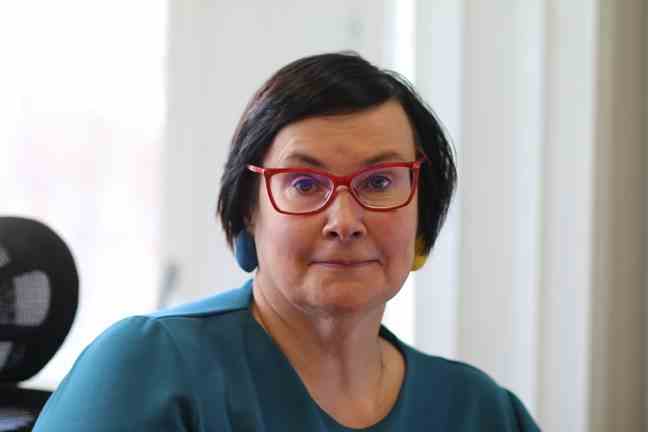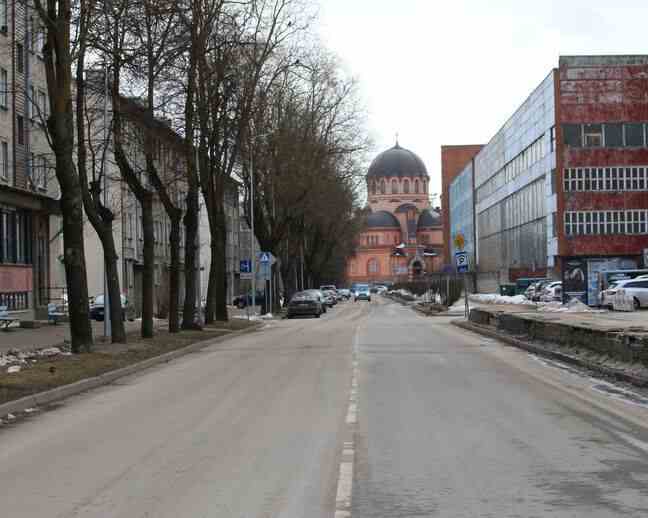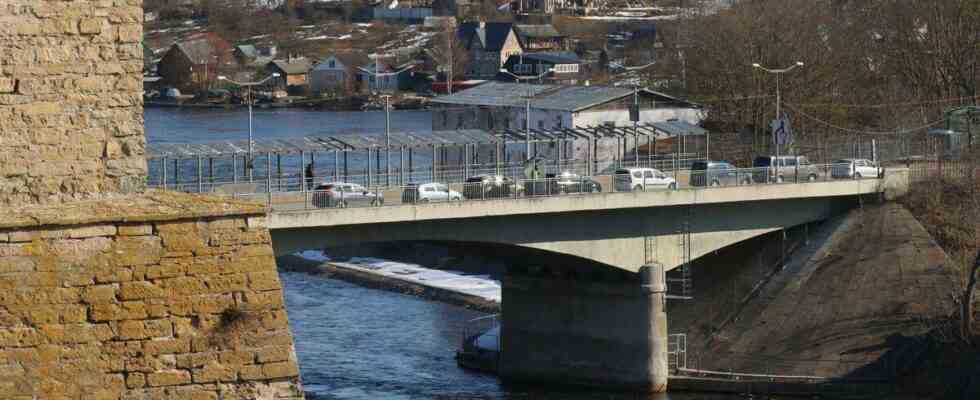Rebelote. As in 2014 with the annexation of Crimea by Russia, the city of Narva at the eastern end of Estonia, is again in the spotlight with the war in Ukraine. Since February 24, Western journalists have been marching through the streets of the city of just over 65,000 inhabitants, curious to know if the city, linked to Russia by the Friendship Bridge, will be Vladimir Putin’s next prey. .
Facing the river, a statue of Lenin, one of the last in Estonia, points to the Russian border, about 300 km long, and on which there are three border posts. With the fort of Ivangorod facing it, Narva is often seen as a potential gateway to Estonia, in the event of a Russian invasion.
“No military threat against Estonia”
“Journalists asked me if I had been scared in 2007 [le déplacement du soldat de bronze à Tallinn avait provoqué de vives tensions avec une partie de la communauté russe en Estonie], then in 2014 during the annexation of Crimea, the mayor of the city, Katri Raik (Social Democratic Party), kindly gets annoyed with whom we made an appointment. I was not afraid, and I still am not afraid in 2022. No one doubts that our borders are well secured, and we have allied forces present in Estonia, in addition to our own military forces. “Estonia is not Ukraine, insists the elected. “We are part of NATO and the European Union,” she insists. There is no military threat against Estonia. »

During the Soviet occupation of Estonia in the aftermath of World War II, many Russians were sent to Narva, especially to work in the textile industry. “In 1991, the Soviet Union collapsed, recalls Katri Raik. Some of them left, others stayed, and among them some received Estonian citizenship, others did not. But for all those who stayed, Estonia became their home. In Narva, most people are Russian-Estonians. »
Fear of a “fifth column”
Russian-Estonians, or simply Russian speakers, who inhabit more than 90% of Narva, a city that suffers from a special image in Estonia, as a kind of Russian enclave, which is viewed with suspicion. “After 30 years, there is still suspicion about the “loyalty” of this population to the Republic of Estonia, which could be a kind of “fifth column”, explains Vincent Dautancourt, French teacher-researcher at the University of Tartu, specialist in Russian-speaking minorities in Estonia. Little by little, some of these Russian-speakers from Narva integrated, the new generations born in Estonia having no particular ties to Russia, but others still regret Soviet greatness. There is still a small part of the population that lives in a bubble, that swears by Kremlin media and knows nothing about the country in which it lives. »
Fearing a sort of “hybrid” war using members of the Russian-speaking community inside the country itself, an association of gun owners has even proposed that gun licenses be suspended for Russian residents. The Interior Ministry rejected the proposal, explaining that such a measure would only be justified if public security was threatened.
“People understand that at this time we have to be united”
This Thursday morning in Narva, the city is calm. Very calm. We walk the streets. No Russian flag hanging from the windows of buildings and houses. We try to start a conversation with the few people we meet, who politely refuse. Distrust, but not aggression. “The situation in the city is absolutely normal,” says Katri Raik. We found no provocation. People understand that right now we have to stick together. »

At the border, Marek Liiva, the head of the police and border guard post, explains that “the Narva border crossing point is operating normally, both in the transport of goods and in the movement of people”. He nevertheless notes that border crossings have increased since the start of the war, “in both directions”, but “slightly higher for people entering the country. »
Refueling in Russia is three times cheaper
“The majority of people entering Estonia are European and Russian citizens who cross the border by land due to an interruption in air connections,” he continues. Several bus companies have introduced additional routes, and people are also crossing on foot. “The movement of people going to Russia has also increased slightly, mainly to go shopping. “Gasoline in particular. This is not the case this Thursday morning, but a resident confirms that for a month, there has often been a line of cars several tens of meters in front of the border. “Russians who take advantage of their passports to refuel on the other side”, where fuel, at around 50 cents per liter, is three times cheaper than in Estonia.

There are also displaced Ukrainians passing through. “On average, nearly 200 Ukrainian war refugees a day have arrived from Russia at the Narva border crossing,” continues the head of the post. Most enter Estonia to transit to other European Union countries, although some also intend to stay here. »
No revocation of residence permit
Very supportive of the Ukrainian people, Estonia, a small country of 1.3 million inhabitants, already hosts more than 20,000 refugees. “We are not on the hundreds of thousands of refugees welcomed in Poland, Hungary and Romania, but in proportion Estonia welcomes a lot of them, and this is a question which is becoming very significant in the country, explains Vincent Dautancourt. Questions arise concerning their reception, the schooling of the children, because we know very well that they will be obliged to stay, at least in the medium term. »
The question agitates society all the more, as a rumor circulated for a time in Narva, according to which the Estonian authorities could withdraw their residence permits from Russian citizens of the country. “It is absolutely false, slice Katri Raik. Our Ministry of Interior confirmed on February 28 that we will not revoke the residence permits of citizens of the Russian Federation legally residing in Estonia. We live in a democratic country. »
Accelerating education in Estonian
The city’s mayor, as well as the Estonian government, think that the Russian-speaking population of Narva, who mainly got their information from the Russian-language media until they were banned in the country (which does not prevent some to get around the ban), also needs reassurance.
“I think we need to talk to each other more, says Katri Raik, and we need to pay more attention to our communication with the Russian and Russian-speaking population. For example, right now our government is discussing what to ban and allow on May 9 [célébration de la victoire soviétique lors de la Seconde Guerre mondiale]. Should we ban certain symbols, like the “Z”, or others, and especially why? »
Finally, the mayor of Narva believes that the city mainly needs Estonian-language schools, while eight out of ten schools in Narva are in Russian. “The state has understood this, helping us to build a new one, because the inhabitants want their children to go to school in Estonian, people want a full place in Estonian society. For some, the crisis in Ukraine is indeed an opportunity to accelerate the integration of Russian-speaking populations who were not Russian until now.

